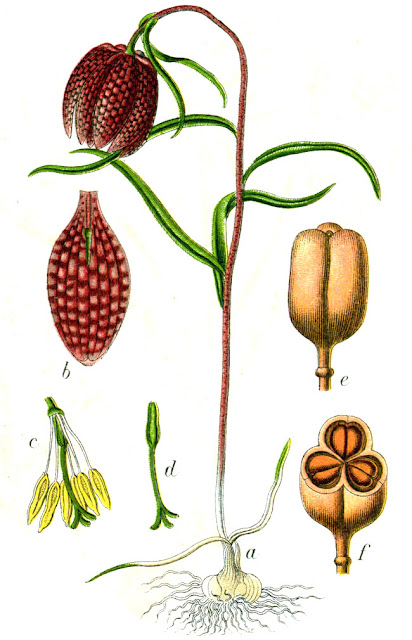 |
| How do you propagate the Snake's Head Fritillary? - Fritillaria meleagris |
The snake's head fritillary is a gorgeous yet delicately patterned ornamental flowering bulb. It is extremely popular as a seasonal garden plant and as such is cultivated in huge numbers. However If you are looking to create a large scale planting then purchasing pot-grown or pre-packed bulbs can prove to be expensive. However as a species which has proven hardiness in England it is worth considering propagating Fritillaria meleagris yourself. So just how do you propagate the Snake's Head Fritillary?
Luckily, as a native to Britain (or a garden escape from the 18th century), the Snake's Head Fritillary – Fritillaria meleagris, is relatively easy to propagate. This can be done either by division when the bulbs are dormant at the end of the summer, or by collecting and sowing viable seed.
 |
| How do you propagate the Snake's Head Fritillary? |
Before you sow your seed however, you will need to make a change in your seed compost recipe in order to help optimise the germination results. Simply make up a mix of 1 part perlite or horticultural grit to 2 parts John Innes seed compost. Sow them thinly – as this will avoid the need to prick out the delicate seedlings later, and then cover the seed with a thin layer of compost carefully adding no more than ¼in of horticultural grit on top. Place outside in a shady spot, but open to the weather and if you have collected the seed early enough germination can start to occur as soon as 1 month.
It's important to keep the compost moist throughout the summer and once most of the seeds have germinated, they can be moved into a cold-frame or well-lit spot in the garden. At this point they can be given an occasional liquid feed as this will help to prevent problems with loss of nutrients due to leaching. Grow them on for at least another year before transplanting out into a moist, semi shaded position in August when the plants become dormant.
Fritillaria meleagris is relatively pest and disease free although it can be susceptible to damage from the scarlet lily beetle. If beetles are seen then measures must be taken quickly due to the small size of the plant compared to the voracious appetite of the scarlet lily beetle.
Main image - Attribution: Sten Porse https://creativecommons.org/licenses/by-sa/3.0/deed.en
In text image - Johann Georg Sturm public domain
Fritillaria meleagris is relatively pest and disease free although it can be susceptible to damage from the scarlet lily beetle. If beetles are seen then measures must be taken quickly due to the small size of the plant compared to the voracious appetite of the scarlet lily beetle.
Main image - Attribution: Sten Porse https://creativecommons.org/licenses/by-sa/3.0/deed.en
In text image - Johann Georg Sturm public domain
For related articles click onto the following links:
HOW TO GROW FRITILLARIA IMPERIALIS FROM SEED
HOW TO GROW THE SNAKE'S HEAD FRITILLARY - Fritillaria meleagris
HOW TO GROW FRITILLARIA IMPERIALIS FROM SEED
HOW TO GROW THE SNAKE'S HEAD FRITILLARY - Fritillaria meleagris







No comments:
Post a Comment